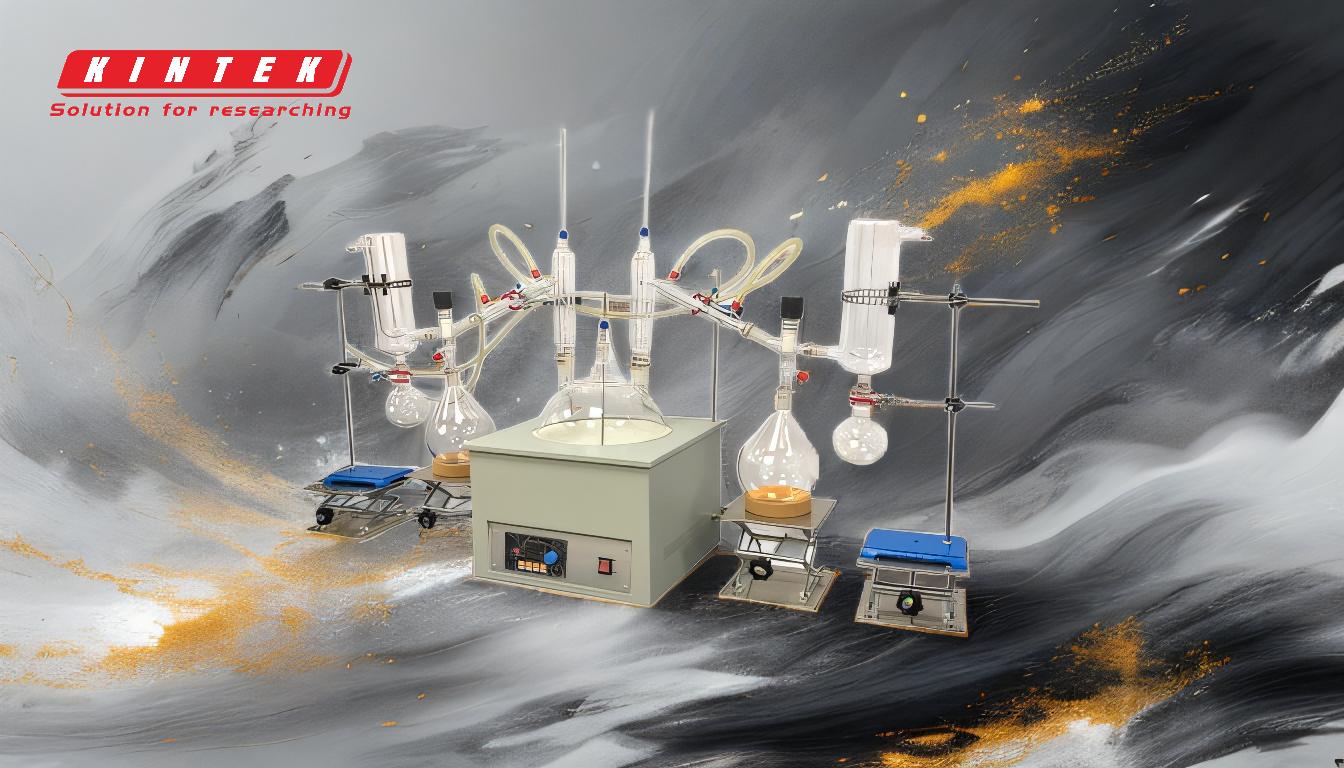Simple distillation is a fundamental separation technique used to purify liquids by exploiting differences in boiling points. The process involves heating a liquid mixture to its boiling point, collecting the vapor, and then condensing it back into a liquid. This method is particularly effective for separating compounds with significantly different boiling points, such as water and salt. The equipment required for simple distillation is relatively straightforward and includes a heat source, a distillation flask, a condenser, and a receiving flask. Below, the key components and their roles are explained in detail.
Key Points Explained:

-
Distillation Flask:
- The distillation flask, often a round-bottom flask, holds the liquid mixture to be distilled. It is designed to withstand heat and is typically made of heat-resistant glass.
- The flask is connected to the condenser via a connecting tube or adapter. As the liquid heats, it begins to boil, and the vapor rises into the condenser.
-
Heat Source:
- A heat source, such as a heating mantle, hot plate, or Bunsen burner, is used to heat the liquid in the distillation flask. The heat must be controlled carefully to ensure the liquid boils steadily without overheating.
- For simple distillation, a consistent and moderate heat source is ideal to avoid bumping (sudden boiling) and ensure a smooth distillation process.
-
Condenser:
- The condenser is a critical component that cools the vapor back into a liquid. It typically consists of a glass tube surrounded by a cooling jacket through which cold water circulates.
- As the vapor passes through the condenser, it loses heat and condenses into a liquid, which is then collected in the receiving flask.
-
Receiving Flask:
- The receiving flask collects the condensed liquid (distillate). It is usually placed at the end of the condenser and is designed to hold the purified liquid.
- The receiving flask should be clean and dry to avoid contamination of the distillate.
-
Thermometer:
- A thermometer is often used to monitor the temperature of the vapor during distillation. This helps ensure that the desired compound is being distilled at its correct boiling point.
- The thermometer is typically placed in the distillation flask or in the connecting tube to measure the temperature of the vapor.
-
Connecting Adapters and Tubing:
- Glass adapters and tubing are used to connect the distillation flask, condenser, and receiving flask. These components ensure a secure and airtight setup, preventing vapor loss and contamination.
- Proper alignment and sealing of these connections are essential for efficient distillation.
-
Optional Components:
- Fractionating Column: While not typically used in simple distillation, a fractionating column can be added for more complex separations. It provides additional surface area for vapor condensation and re-evaporation, improving separation efficiency.
- Vacuum Pump: In some cases, a vacuum pump may be used to lower the boiling point of the liquid, making it easier to distill heat-sensitive compounds.
Summary of the Process:
- The liquid mixture is placed in the distillation flask and heated using a heat source.
- As the liquid boils, vapor rises into the condenser, where it is cooled and condensed back into a liquid.
- The condensed liquid (distillate) is collected in the receiving flask, while impurities or less volatile components remain in the distillation flask.
Simple distillation is a versatile and widely used technique in laboratories and industries for purifying liquids. By understanding the equipment and its functions, users can effectively set up and perform simple distillation to achieve high-purity compounds.
Summary Table:
| Component | Role |
|---|---|
| Distillation Flask | Holds the liquid mixture; made of heat-resistant glass. |
| Heat Source | Heats the liquid steadily; options include heating mantles or Bunsen burners. |
| Condenser | Cools vapor into liquid; uses a cooling jacket with circulating water. |
| Receiving Flask | Collects the purified liquid (distillate). |
| Thermometer | Monitors vapor temperature to ensure accurate distillation. |
| Connecting Adapters | Secures airtight connections between components. |
| Optional Components | Fractionating columns or vacuum pumps for advanced setups. |
Ready to set up your distillation process? Contact us today for expert guidance and equipment!










